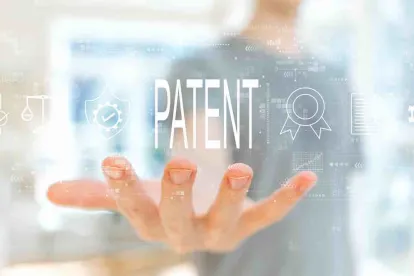After trying to untie the Gordian knot of patent eligibility, it is almost IP comfort food to read a Fed. Cir. decision that deals with obviousness. In Chemours Co. FC, LLC v Daikin Industries, Ltd., Appeal Nos. 2020-1289 and 2020-1290 (Fed. Cir., July 22, 2021) a split panel of Reyna (writing) and Newman (Happy Birthday!) with Dyk dissenting, reversed a PTAB final written decision that a co-polymer useful for coating cables at high extrusion speeds (30 +/- 3 g/10 minutes) is obvious. Claim 1 of U.S. Pat. No. 7,126,609 reads:
“1. A partially-crystalline co-polymer comprising tetrafluoroethylene [TFE],[and] hexafluoropropylene [HFP] in an amount corresponding to a [HFP] index (HPI) of from about 2.8-5.3…and having a melt flow rate of within the range of about 30 +/- 3g/10 min….”
The Board found all the challenged claims of the ‘609 patent to be obvious over U.S. Pat. No. 6,541,588. This patent disclosed that the TFE/HFP polymer must have a very narrow m.w. distribution and the prior art disclosures of the need for a broad m.w. distribution were incorrect. Furthermore the disclosed melt flow rates must be 15 g/10 min “or greater”. The working example used 2 g/10 min. while the ‘609 patent disclosed that the optimal rate is 30+/-3 g/10 min. The Board reasoned that “we are persuaded that one such technique [to increase coating speeds] would have included increasing [‘588 patent’s exemplified][melt-flow rate] from 24g/10 min. to the recited range of ‘about 30 +/- 3 g/10 min.,’ even if doing so would have required broadening the [m.w.] distribution of the polymer beyond the ‘narrow [m.w.]’ suggested, but not required or precisely defined by [the ‘588 patent].”
The panel majority wasn’t convinced, and found that the obviousness conclusion was not supported by substantial evidence. The majority’s introduction to its rationale is a bit muddy, since the majority spends a long paragraph on the definition of non-analogous art, but does not explain which “record evidence” relied on by the Board is non-analogous. Certainly the ‘588 patent is in the same technological field. But instead of linking non-analogous art to a discussion of the prior art of record, the majority jumps to a rationale that is based on the “teaching away” doctrine:
“Here the Board appears to have ignored the express disclosure in [the ‘588 patent] that teaches away from the claimed invention and relied on teachings from other references that were not concerned with the particular problems that [the ‘588 patent] sought to solve. In other words, the Board did not adequately grapple with why a skilled artisan would find it obvious to increase [the ‘588 patent’s] melt flow rate to the claimed range while retaining its critical ‘very narrow [m.w.] distribution.’”
The majority goes even further, relying on IP law that amplifies the teaching away doctrine by citing Trivascular, Inc. v. Samuels, as “finding no motivation to modify the prior art where doing so would destroy the basic objective of the prior art [to use a narrow molecular weight polymer].” The majority even goes so far as to conclude that the art worker would not have a reasonable expectation of success, if he/she chose to increase the claimed flow rate.
The majority put the icing on this cake of reversal by accepting Chemours’ evidence of commercial success, even without a specific showing of a nexus between the claimed invention—which is a commercial product—and commercial success:
“Contrary to the Board’s decision, the separate disclosure of individual limitations, where the invention is a unique combination of three interdependent properties, does not negate a nexus. Concluding otherwise would mean that nexus could never exist where the claimed invention is a unique combination of known elements from the prior art…sales figures alone are also evidence of commercial success [and a showing of market share data is not required].”
The majority additionally dismissed the Board’s conclusion that the ‘609 patent was a “blocking patent.” Daikin’s arguments were so off base that you will probably never encounter them. All practitioners should read this decision, then put it under your pillows—it will definitely sweeten your dreams in a non-obvious way!


 />i
/>i


